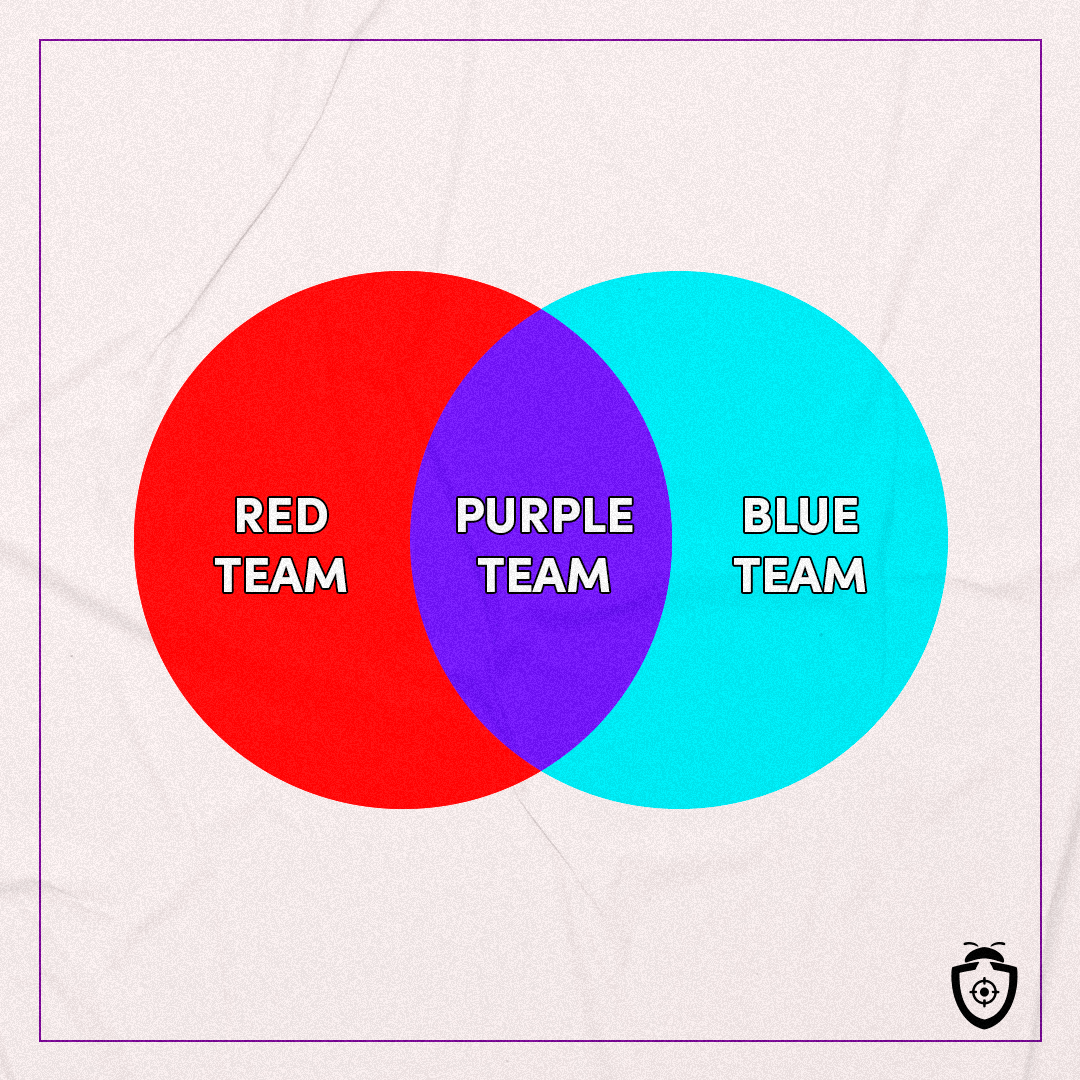What is a Purple Team and why have one?

Blue Team + Red Team = Purple Team. You don’t need to be a super strategist to know that in a team, attack and defense work better when they operate in harmony. In cybersecurity, this is no different, and the Purple Team represents the union of these two fronts.
Typically, those who have an information security system or work in this field have a formed opinion on the Red Team vs. Blue Team debate. And even if it operates in the shadows of this clash, the Purple Team is an approach that combines the best of both teams, seeking collaboration between them to strengthen the security of systems.
This collaboration allows the teams to share information and knowledge, identify and fix security vulnerabilities, improve security policies, and more.
Want to know more about what a Purple Team is and why you should have one? Continue reading this article!
What is a Purple Team? The Purple Team is a cybersecurity approach that integrates the penetration testing practices of the Red Team with the digital defense practices of the Blue Team, with the goal of improving an organization’s security.
While the Red Team simulates cyberattacks to test the security of a system, the Blue Team monitors and responds to these attacks.
Just as purple is the result of mixing blue and red, the Purple Team combines the skills and knowledge of these two teams to identify and correct potential vulnerabilities in systems or networks.

50% Red Team The Red Team is dedicated to testing a system's security through controlled cyberattacks.
Acting as potential "intruders," Red Teams use hacking techniques such as phishing, malware, ransomware, penetration testing, and other tactics with the aim of penetrating the systems and mapping out potential vulnerabilities.
50% Blue Team The Blue Team is responsible for defending a system against cyberattacks. The role of the Blue Team is to monitor the network, detect and respond to security incidents, and implement proactive security measures to protect the system against threats.
Security professionals working in the Blue Team possess skills in areas such as log analysis, network monitoring, endpoint security, threat detection, incident response, and vulnerability management.
What are the benefits of having a Purple Team? The Purple Team combines the best of both worlds, offering several advantages for companies. Here are some:
- Identification of Vulnerabilities: Allows for a more comprehensive identification of security vulnerabilities by combining the Red Team's expertise in exploiting vulnerabilities with the Blue Team's expertise in detecting and fixing them.
- Collaboration: Facilitates collaboration between the Red and Blue Teams, allowing them to work together to find solutions and implement more effective security controls.
- Continuous Learning: Collaboration between teams enables them to learn from each other, thereby improving their ability to detect vulnerabilities and prevent cyberattacks more efficiently.
- Cost Reduction: Having a Purple Team can help reduce cybersecurity costs, as the teams work together, sharing resources and operating more efficiently.
- Greater Effectiveness: With the integration of Red Team testing and Blue Team vulnerability detection, there is a continuous feedback loop that enhances security techniques and measures.
Red Team vs. Blue Team vs. Purple Team If you've read this far, you might have noticed that the clash between Red, Blue, and Purple Teams is not truly a conflict. Each team complements the others. To recap:
- The Red Team evaluates how a company's security system handles cyberattacks by simulating external, internal, and advanced threats. The Red Team's goal is to discover and exploit vulnerabilities to identify potential security gaps.
- The Blue Team aims to protect the organization's network and systems from potential attacks by detecting threats, identifying vulnerabilities, and implementing security measures to safeguard against future attacks.
- Meanwhile, the Purple Team brings a collaborative approach, where the Blue Team and Red Team work together to identify and fix vulnerabilities and improve the effectiveness of the organization's cybersecurity system.
This collaboration allows the teams to share techniques, methods, and vulnerabilities discovered during testing, leading to a better understanding of risks and the best measures to address each vulnerability.
Enjoyed this content? On the BugHunt blog, you can access more articles on technology, cybersecurity, Bug Bounty, and much more!

